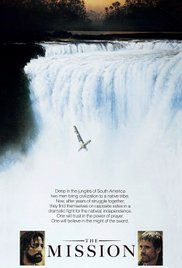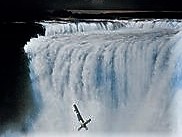The Mission **** (1986, Robert De Niro, Jeremy Irons, Ray McAnally, Liam Neeson, Aidan Quinn) – Classic Movie Review 6558
Director Roland Joffé’s religious-minded 1986 British anti-war film stars Jeremy Irons as Father Gabriel, a saintly 18th-century Spanish priest, whose Jesuit mission in South America is closed by a papal order. But Robert De Niro also stars as Rodrigo Mendoza, a slave-trader turned Jesuit convert, who joins Father Gabriel in his mission and is ready to take up arms to prevent its closure.
When Spain sells the South American colony to Portugal, Mendoza leads the defence against the Portuguese aggressors.
Joffé’s expensive epic boasts eye-catching best cinematography (Oscar-winning Chris Menges), a devout, genuine and literary original story and screenplay by Robert Bolt, a wonderful score by Ennio Morricone and powerful acting from the stars and from Ray McAnally as the papal emissary Cardinal Altamirano, as well as Liam Neeson, Aidan Quinn, Ronald Pickup, Cherie Lunghi, Chuck Low and Daniel Berrigan.
Director Joffé rather loses his grip on the narrative and the film’s drive and dynamism in the middle section of the movie. But he gets back in the driving seat for an impressive finale that includes a hard-hitting massacre.
They must have been disappointed it won only a single Oscar (Menges’s second, after The Killing Fields) , out of seven nominations.
Joffé won the Palme d’Or for best picture and the Technical Grand Prize at the 1986 Cannes Film Festival. It won two Golden Globes – for Best Screenplay – Motion Picture (Bolt) and Best Original Score – Motion Picture (Morricone). And it won three Baftas – Best Actor in a Supporting Role (McAnally), Best Editing (Jim Clark) and Best Score (Morricone).
It is another real credit to director Joffé and to producer David Puttnam’s Goldcrest studio, after The Killing Fields. But alas it did not prove the success of The Killing Fields. On a cost of $24,500,000, it grossed $17,218,000 in the US.
It was shot in Argentina, Colombia, Brazil, Paraguay and England.
© Derek Winnert 2018 Classic Movie Review 6558
Check out more reviews on http://derekwinnert.com



